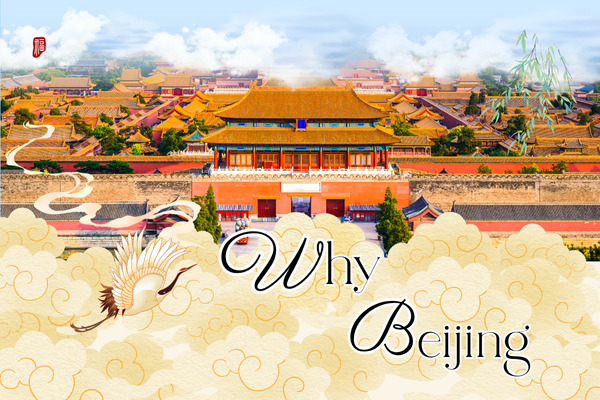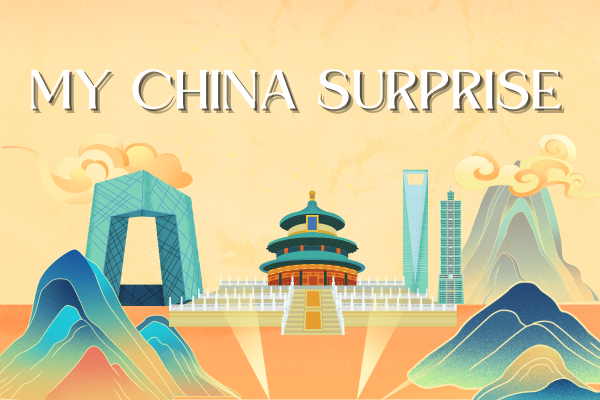Beijing, a city of striking modernity alongside centuries of tradition. Viewed from the hill at centrally located in Jingshan Park, to the east is a skyline of futuristic, supertall architecture while to the south stretches the magnificence of Forbidden City. Also from the hill can be seen extensive areas of low-rise hutong alleys, some dating from 13th century Yuan Dadu, the very beginnings of today’s Beijing.
Looking back thirty five years to July 1987, when I first arrived in Beijing, the city felt so different compared with today. Yes, the centuries old alleys and the majestic palaces were there but lacking was the skyline that now symbolizes not just contemporary Beijing but of 21st century China.

Beijing had been initially planned and grew as an imperial capital. Despite some industrialization during the 1950s and 60s it was then not a major center of business, it lacked, for example, a distinctive CBD (Central Business District) as seen for example in New York or London.
Early in 1979, changes were happening, particularly in southern China due to the reform and opening-up. International trade, commercial and financial activities would grow rapidly, transforming China into the modern economy we see today. For Beijing, change started gradually yet significantly.
To the east of Jianguomen, at an area today known as Guomao, in February 1985, two years before I arrived in Beijing, the foundations of China World Trade Centre (CWTC) were dug. The first stage of what we see today, was opened in August 1990.

Attracting multinational corporations and high-end retail it would include hotels, offices, apartments, shopping malls and more. Its twin towers and China World Hotel quickly became iconic landmarks of a new Beijing. I was regularly there, photographing, watching the city’s transformation. It marked the start of what would become Beijing’s vibrant and architecturally stunning CBD.
Recently I was walking eastwards along Guanghua Road, heading into the heart of the CBD. Looking up at some of the world’s highest supertall structures, I thought back to my earlier days in this vast city. Where the CBD is today, post-1949 this area was part of the urban expansion and industrialization that was spreading beyond the former city walls. Although the factories have since disappeared, some apartments that once housed the workers still exist within today’s modernity.
In the early 2000’s plans were being discussed for the creation of a major CBD zone. I first appreciated and realized the scale of this project at Beijing Urban Planing Exhibition Hall near Qianmen. A large floor model displayed what would be the new skyline including 330 meter tall CWTC Tower 3 and CCTV’s futuristic Headquarters tower. It was all so different to the Beijing I was familiar with. “Would it happen?” I thought then. Not only has this been realized but the area has continued to expand eastwards across Sanhuan (No3 Ring Road) and upwards with today, some of the world’s tallest buildings.
What has been amazing has been to regularly walk around this area, watching the ongoing construction and to document its progress through my camera lens. To admire the work of engineers carefully putting the buildings together as they steadily rise skywards. Every few months I would notice how much the buildings had risen, how the area was changing and nearing completion. The achievements have been incredible and so quickly changing the appearance of this increasingly dynamic area.

In recent years the original China World Mall has been expanded, modernized and today a vibrant area of restaurants, cafes, bars and shops that is attracting growing numbers of patrons. In spring 2017, an outdoor terrace opened on the 6th floor of the mall. Restaurants and cafe-bars, some with outdoor dining allowed for an entirely different perception of the CBD’s advancement. I became a regular visitor there, always with my camera to record not just each stage of the construction but also people socializing there for lifestyles have also changed.
Early in 2012 I first became increasingly aware of construction underway directly east of Sanhuan (No.3 Ring Road). Then, it was hard to imagine that there would rise one of the world’s tallest buildings, 528 metre high China Zun (CITIC Tower). It topped out in August 2017 with construction competed on December 28 2018. However, I could only watch, from road level, the progress of China Zun and other towers around it. With the opening of the China World terrace I was then able to look straight onto the development.
This was a place for photography and to introduce visitors to Beijing’s new skyline. Increasingly it is a place where many people gather to photograph, to admire the skyline particularly in the evening when many buildings are lit up. The scene certainly spectacular and a reflection of Beijing’s progress in recent year.
Although some work is still ongoing much of this extension to the CBD has been completed. It is now possible to walk around the buildings, something I have been doing recently. It provides an opportunity to marvel at what has happened over the past ten years. To stand there and look straight up between these supertall towers is something I could never have imagined during my earlier years in China.

Today’s CBD is more than simply tall buildings and futuristic architecture - it is also about the evolution of an area. Apart from China World Mall, there are several locations that are becoming popular as a socializing, wining and dining destination.
People will go to the CBD, not simply for work but to have a night out surrounded by so much that represents the progress undertaken to transform this part of Beijing into a leading international business center. The architecture has certainly given the city a distinctive, easily recognizable skyline.
For me, it is fascinating when walking around historic hutong areas such as Shichahai, to look across the low-rise, tiled rooftops towards the gleaming tower of China Zun. The comparison between older and new Beijing is there to see. However, each is a part of the Beijing we see today. A city whose progress I have photographed and continue to do for Beijing is certainly a city of change.






